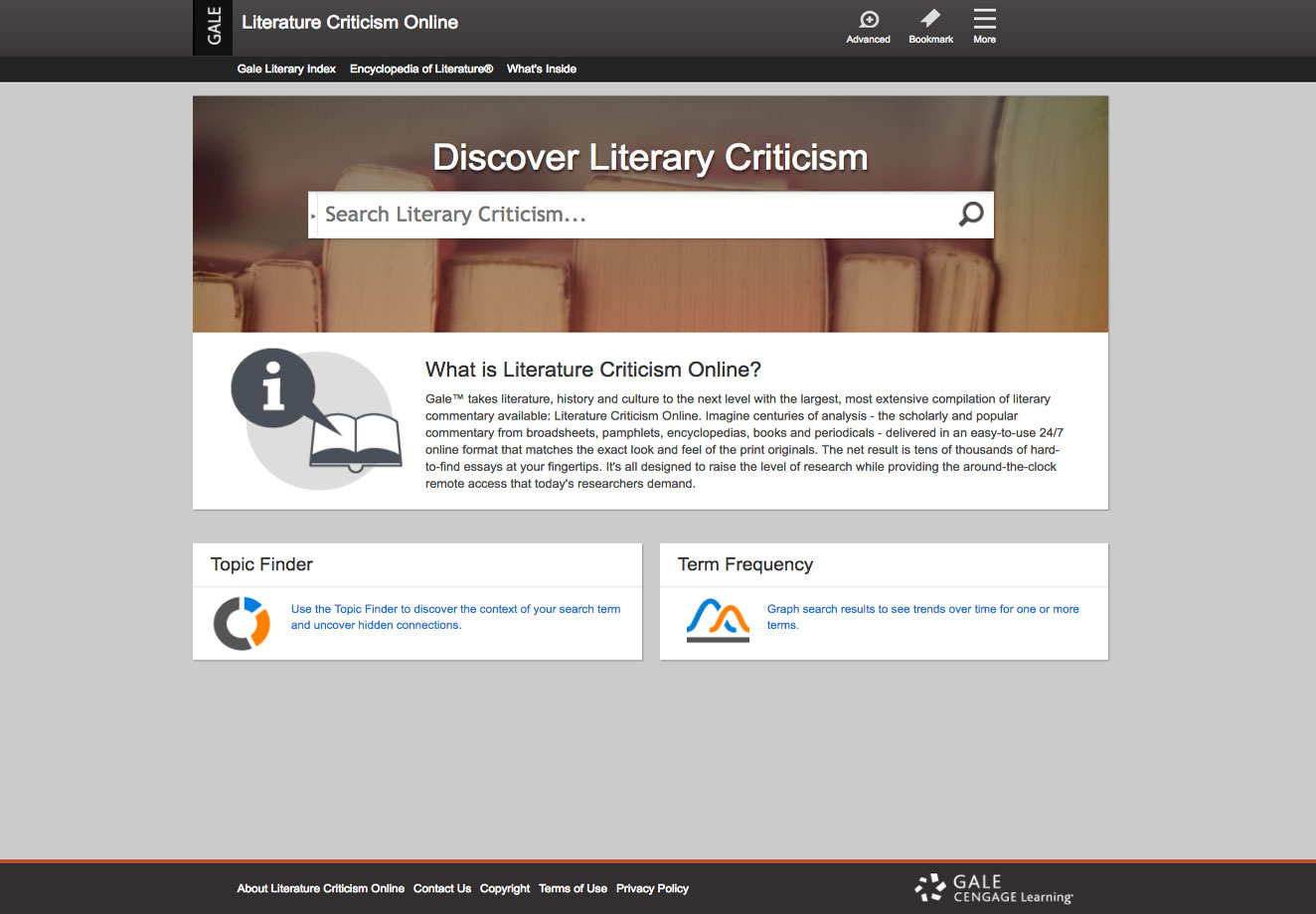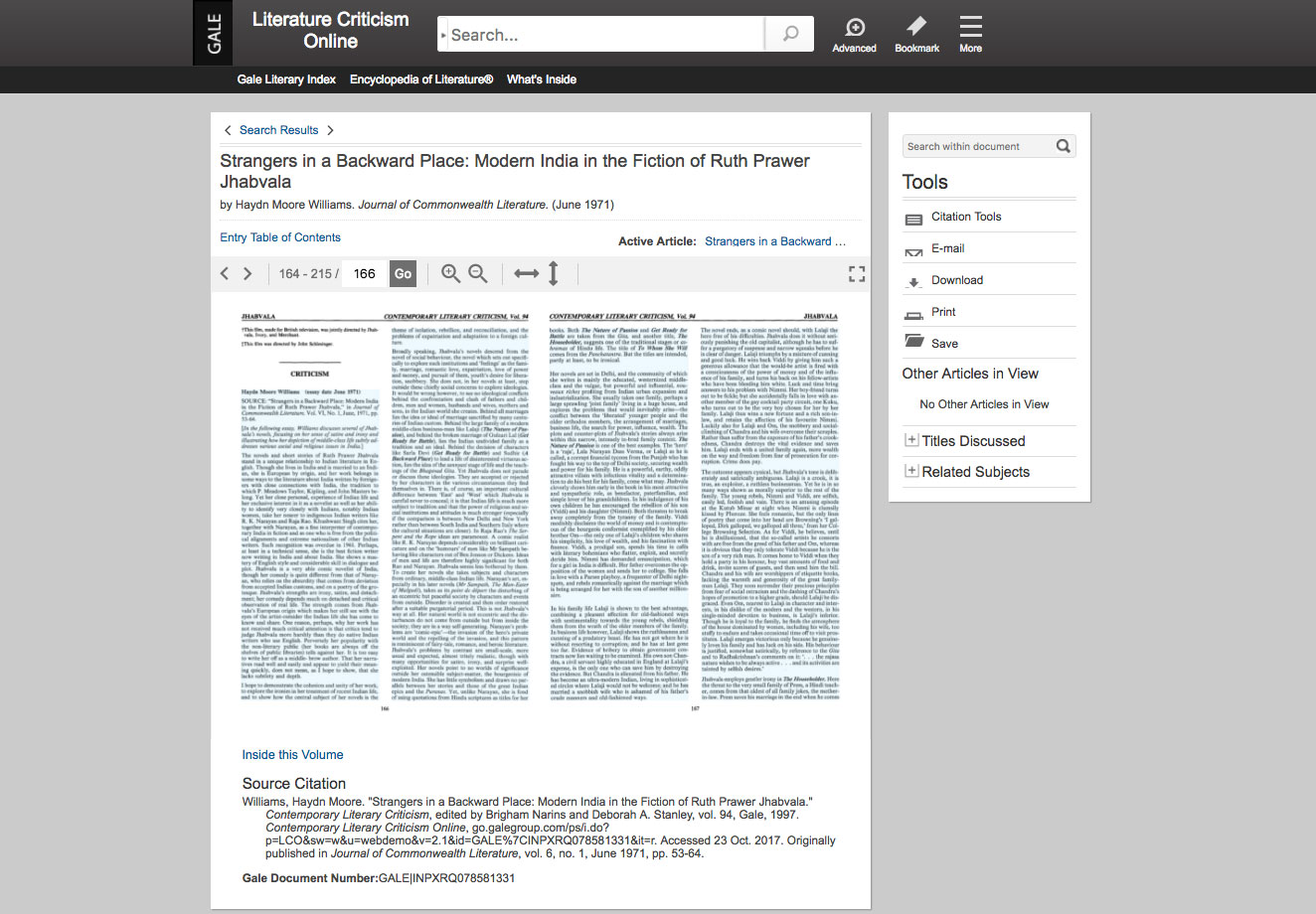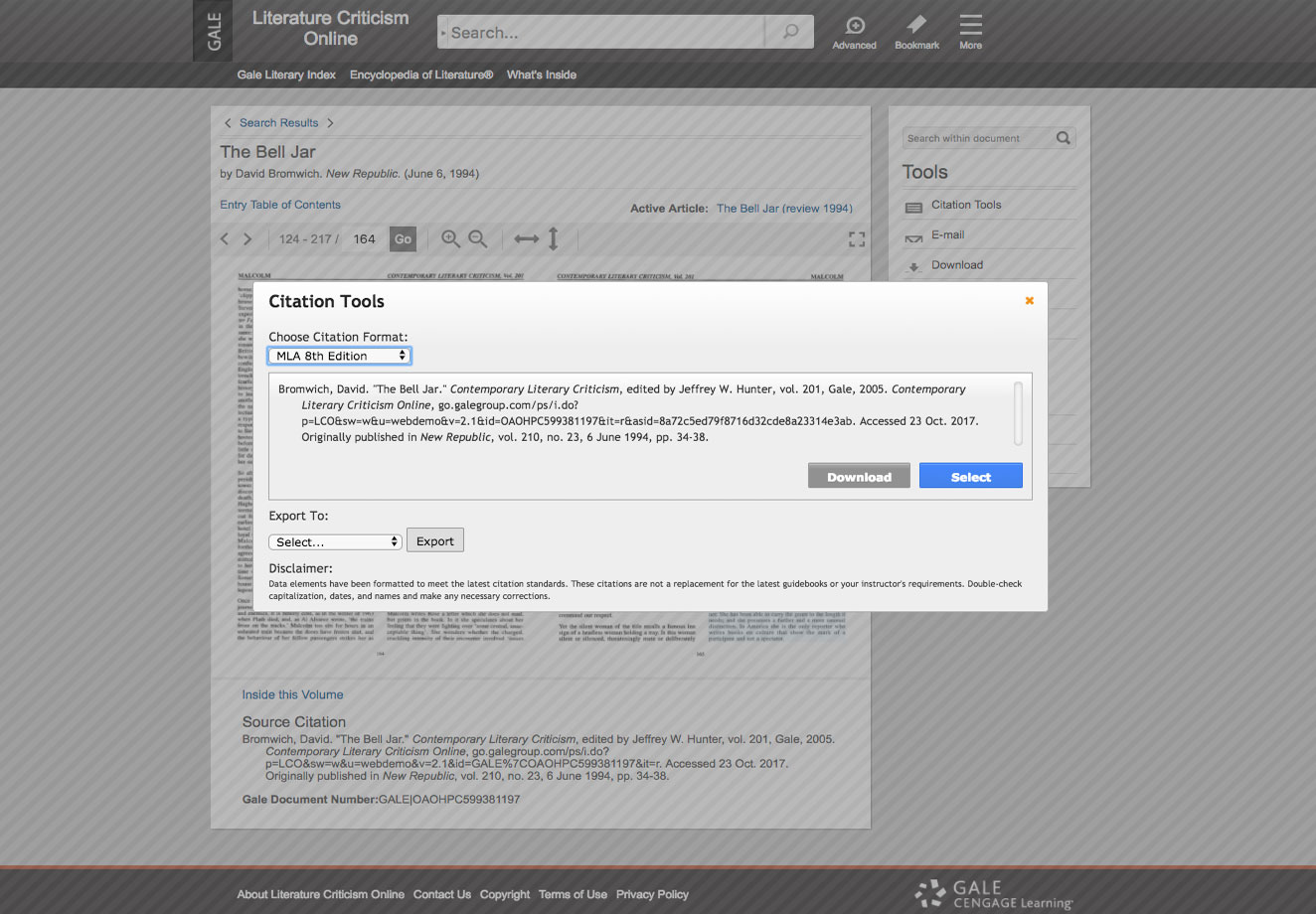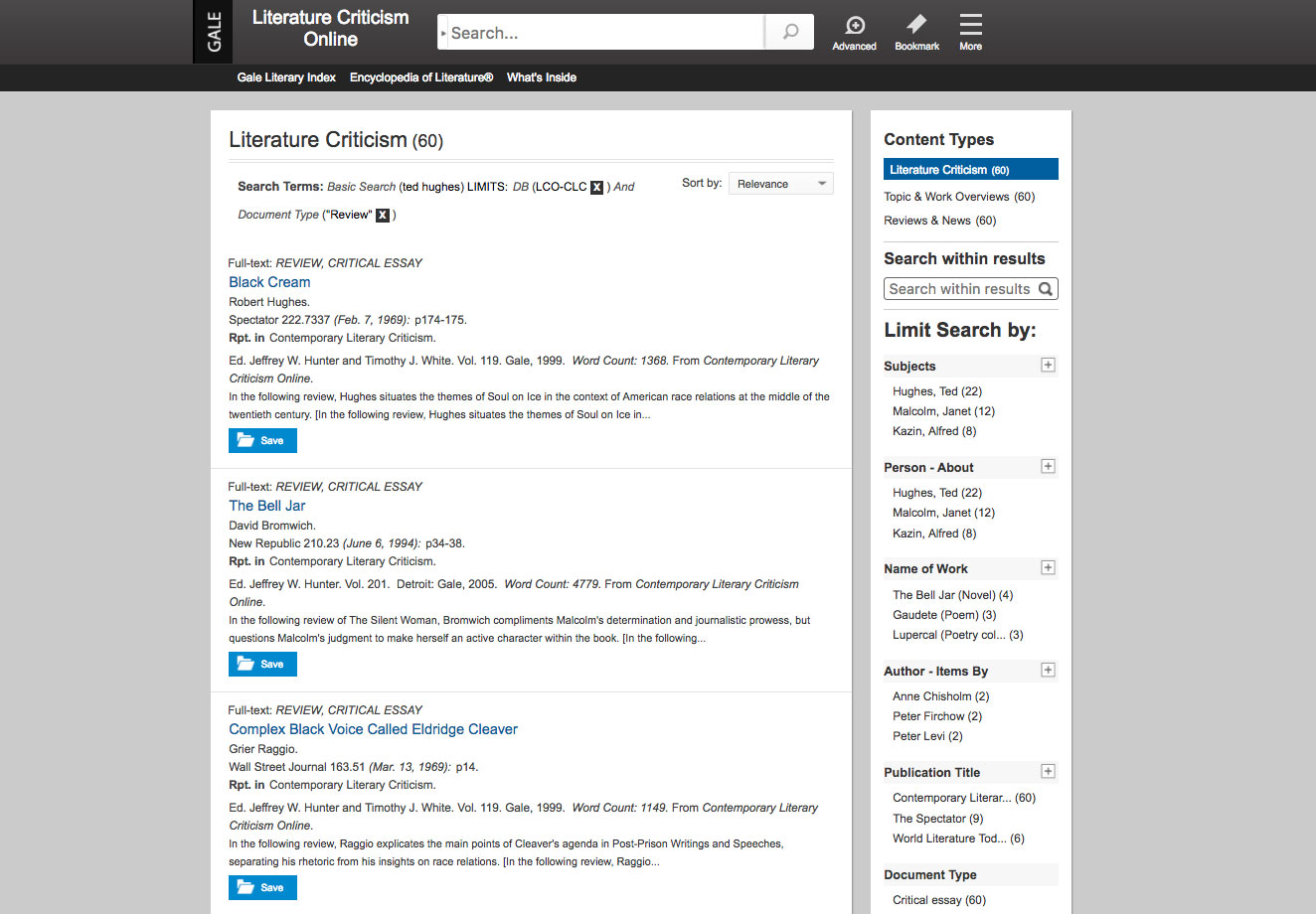The most renowned literary figures, exposed.
Contemporary Literary Criticism Online
Brings together critical responses to the writings of the world's most renowned novelists, playwrights, short story writers, scriptwriters, poets and other creative writers. Additional bibliographic material and biographical context supplements the criticism, guiding the reader to a greater understanding of literary genres and creators.
Each entry includes a set of previously published reviews, essays and other critical responses from sources such as:
- Scholarly books and journals
- Literary magazines
- Newspapers
- Interviews
- Scholarly websites
They are all carefully selected by subject experts to create a representative history and cross-section of critical responses. Approximately 90-95% of critical essays are full text.
There are around two hundred essays per volume in the long-standing Contemporary Literary Criticism series. Each is prefaced by a full citation and annotation, and most entries include an author portrait. Each volume in the series profiles approximately 6-8 novelists, poets, playwrights and other creative and nonfiction writers and includes cumulative author name, topic, and nationality indexes, as well as a volume-specific title index. A cumulative title index for the entire series is available separately. Volumes up to 127 cover authors who died between 1960 and 1999. Volumes from 128 onwards cover authors who died after 1999.
Look Inside
Additional Details
subjects covered
- Communication and Media Studies
- Comparative Literature
- Creative Writing
- Education
- English Language
- English Literature
- History
- Language Teaching and Learning
- Linguistics
- Literature Criticism
- Politics
- Psychology
- Publishing
- Theatre Studies
- Translation Studies
- Twentieth Century Studies
Platform Features & Tools
Collaboration Tools
Integrated G Suite for Education and Microsoft Office 365 tools enable users to share, save, and download content—including highlights and notes.
Topic Finder
By grouping commonly occurring themes, this tool reveals hidden connections within search terms—helping to shape research by integrating diverse content with relevant information.
Term Frequency
Researchers can see the frequency of search terms within sets of content to begin identifying central themes and assessing how individuals, events, and ideas interact and develop over time.













